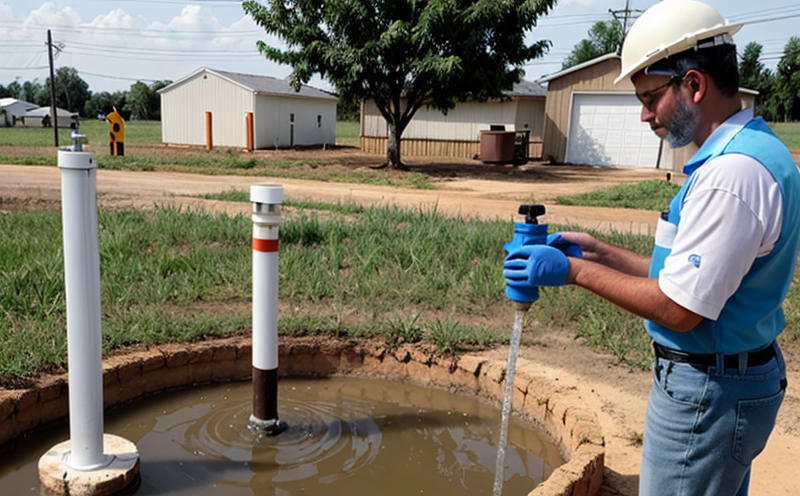EPA Method 537 PFAS in Drinking and Groundwater
The Environmental Protection Agency's (EPA) Method 537 is a critical tool for detecting per- and polyfluoroalkyl substances (PFAS) in drinking water and groundwater. PFAS are a class of man-made chemicals that have been used since the 1940s, primarily in firefighting foams, non-stick cookware coatings, waterproof clothing, and other industrial applications.
Due to their chemical stability and resistance to degradation, PFAS can persist in the environment for long periods. This persistence makes them hazardous contaminants that can contaminate drinking water sources, posing significant risks to public health. The EPA Method 537 is designed to detect these contaminants with high sensitivity and precision.
The method is part of a broader effort by regulatory bodies worldwide to address growing concerns about PFAS pollution. By adhering to this standard, laboratories can provide accurate data that informs critical decisions regarding water quality management and public health protection.
Method 537 employs liquid chromatography-tandem mass spectrometry (LC-MS/MS) for the analysis of PFAS compounds in drinking water and groundwater. The LC-MS/MS technique allows for the detection of extremely low levels of these compounds, down to parts per trillion.
To ensure accurate results, proper sample preparation is crucial. Samples are typically collected from wells or other sources and then filtered to remove particulate matter before analysis. The EPA provides detailed guidelines on how to prepare samples for testing under Method 537.
The method involves several steps including extraction, clean-up, concentration, and quantification of the target PFAS compounds. Each step is designed to maximize sensitivity while minimizing matrix effects that could interfere with accurate measurement.
Results from EPA Method 537 are reported in parts per trillion (ppt) or equivalent units. The method also specifies detection limits for various PFAS compounds, which can vary based on the specific compound being analyzed. These limits reflect the precision and accuracy of the analytical technique used.
The importance of this testing cannot be overstated given its role in ensuring compliance with EPA regulations. Drinking water providers must monitor their systems regularly to ensure that PFAS levels remain below the maximum contaminant level (MCL) set by the EPA, currently at 0.02 ppt for PFOA and PFOS.
Understanding the complexities of PFAS contamination requires a deep dive into both the chemical properties of these compounds and their environmental behavior. PFAS are known to bioaccumulate in living organisms, leading to potential health risks if consumed in sufficient quantities over time.
The EPA Method 537 is just one part of an ongoing effort to address this issue. Regulatory bodies around the world are working to establish more stringent guidelines for PFAS contamination and develop new technologies aimed at reducing their presence in water supplies.
Applied Standards
| Standard | Description |
|---|---|
| EPA Method 537 | A comprehensive protocol for detecting PFAS in drinking water and groundwater. |
| ASTM D8260 | An alternative method that can be used alongside EPA Method 537 for additional validation. |
EPA Method 537 is widely recognized as the gold standard for PFAS detection. It has been validated through rigorous testing and is continuously updated to reflect advances in analytical technology and scientific understanding of these compounds.
The method specifies detailed procedures for sample preparation, extraction methods, instrumental parameters, and data interpretation. Compliance with EPA Method 537 ensures that laboratories are using consistent and reliable techniques across different locations and facilities.
Benefits
- Compliance with stringent EPA regulations on PFAS contamination in drinking water.
- Precision detection of PFAS at extremely low levels (parts per trillion).
- Confidence that results are accurate, reproducible, and reliable.
- Supports informed decision-making regarding water quality management and public health protection.
EPA Method 537 provides numerous benefits to laboratories and organizations involved in water quality testing. By adhering to this standard, labs can ensure that their results are consistent with national standards, thereby enhancing trustworthiness and credibility.
The method also facilitates better resource allocation by identifying contaminated areas early on, allowing for targeted interventions before widespread contamination occurs.
Customer Impact and Satisfaction
- Customers receive reliable data that informs critical decisions regarding water quality management and public health protection.
- The method helps ensure compliance with EPA regulations on PFAS contamination in drinking water, thereby protecting public health.
- EPA Method 537 promotes confidence among stakeholders by providing consistent, accurate results across different locations and facilities.
By leveraging EPA Method 537, customers can rest assured that their laboratories are meeting the highest standards of quality and reliability. This leads to increased customer satisfaction as they receive timely, actionable insights into potential water contamination issues.
The method also contributes to improved environmental stewardship by facilitating early detection and mitigation of PFAS contamination sources.





